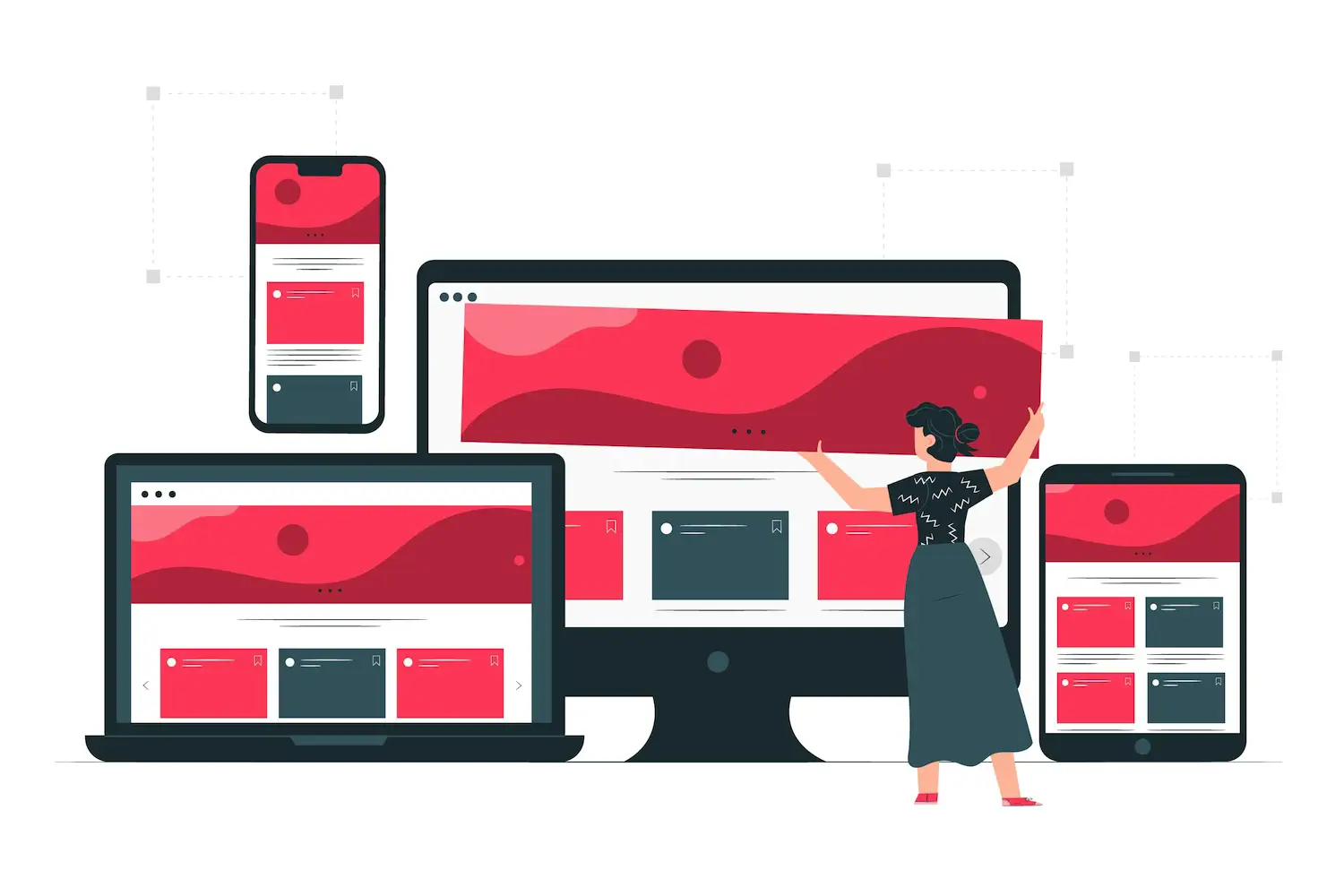Responsive Web Design: Looking Awesome on All Devices!

Responsive design means that your website is built to adapt to various screen sizes and devices. It ensures that your website looks great and functions seamlessly whether it’s viewed on a small smartphone screen or a large desktop monitor. This approach doesn’t compromise the content but optimises its presentation for each device, ultimately enhancing user-friendliness.
In a world where mobile traffic is predominant, responsive design allows you to cater to both mobile and desktop users effectively. It’s all about maintaining the integrity of your website’s content while ensuring it’s presented in the best way for each device, making the user experience smooth and consistent.
What is Responsive Web Design?

The primary aim of responsive design is to eliminate the inconvenience of resizing, scrolling, zooming, or panning that users often encounter on sites not optimized for various devices. Navigating such sites can be frustrating and may deter potential customers.
Moreover, responsive design has made dedicated mobile websites unnecessary. Instead of creating multiple websites for different screen sizes, you can design a single website that seamlessly scales up or down to match the device it’s accessed from. This simplifies the user experience and ensures your website is accessible and user-friendly across various devices.
Why Should Your Business and Brand Consider Responsive Web Design?

Responsive website statistics underline the importance of catering to both desktop and mobile users. The number of mobile users has already surpassed desktop users, and this trend is only going to continue as smartphones become more accessible worldwide.
Additionally, in early 2015, Google introduced a significant change. They made mobile-friendliness a ranking factor in their search engine algorithms. This meant that websites not optimized for mobile would potentially see a decline in search engine rankings. Google prioritized mobile-friendly sites to ensure a better experience for mobile users. So, it’s not just about user convenience; it also impacts your website’s visibility and search engine performance.
Key Benefits of Responsive Web Design
1. Cost Effectiveness: Maintaining separate websites for mobile and non-mobile users can be costly. With responsive design, you save money by eliminating the need for a dedicated mobile site. You invest in a single site design that caters to all visitors and devices.
Real Life Example: Airbnb

2. Flexibility: Responsive design offers flexibility in making quick and easy changes. You won’t have to worry about updating two separate websites. Whether it’s a minor design tweak or fixing a typo, you only need to do it once.
Real Life Example: Uber

3. Improved User Experience: A positive user experience is vital. If your site is slow to load or displays poorly on mobile devices, it can make your business seem unprofessional. Responsive design eliminates the need for zooming and scrolling, ensuring content loads quickly and leaves visitors with a positive impression.
Real Life Example: Starbucks
4. Search Engine Optimisation (SEO) Gains: SEO is essential for ranking higher in search engine results. Google favors mobile-friendly websites, making responsive design a valuable factor in SEO. It, combined with other SEO strategies, can significantly boost your visibility.
Real Life Example: The New York Times
5. Ease of Management: Managing a website can be time-consuming, especially for smaller businesses. Responsive design allows you to make changes yourself quickly. With a single website, tasks like linking in social media updates and managing redirect links become simpler, reducing the stress of website management.
Real Life Example: H&M
In summary, a responsive website not only saves costs and offers flexibility but also enhances the user experience, boosts SEO, and simplifies website management, making it a wise investment for businesses of all sizes.
Embrace Responsive Design for Your Website

It also boosts SEO since Google prefers mobile-friendly sites, leading to higher search rankings and more organic traffic. Plus, it simplifies website upkeep, saving time and resources compared to managing separate desktop and mobile versions.
In a nutshell, responsive design is essential for businesses, offering a better user experience, improved SEO, and easier maintenance in our digital age.





